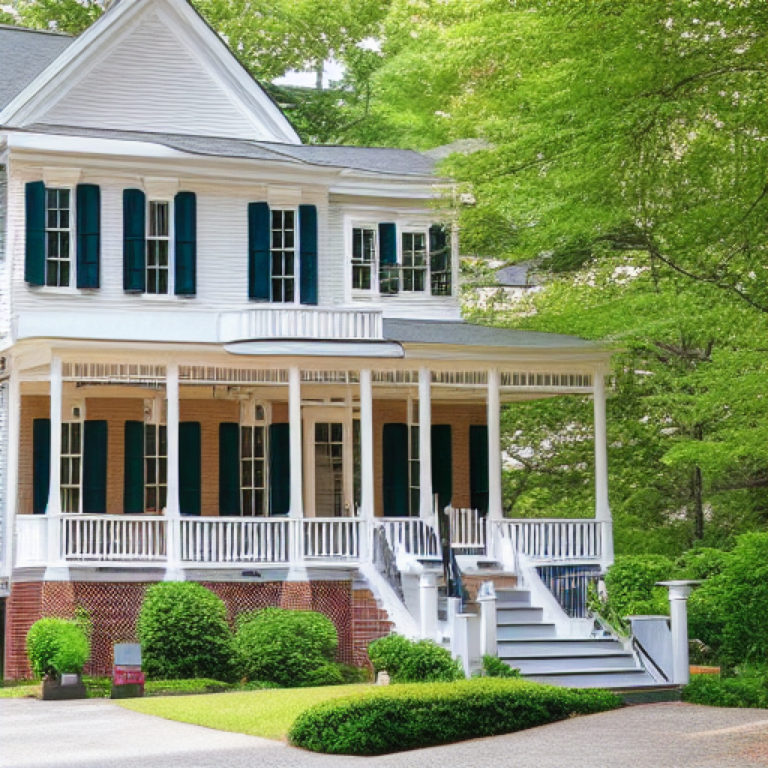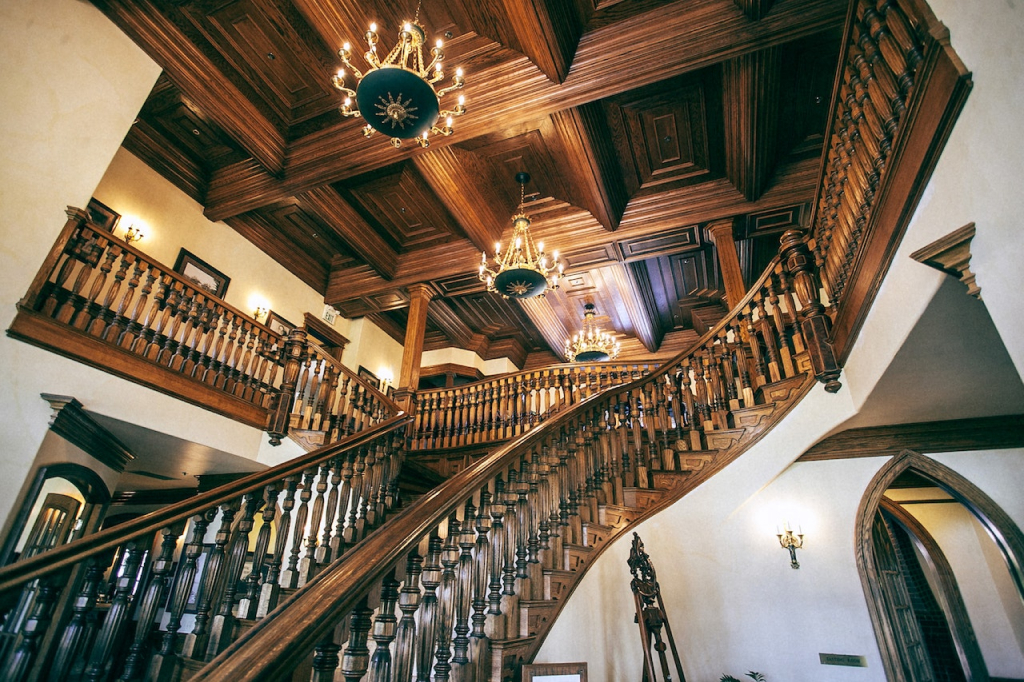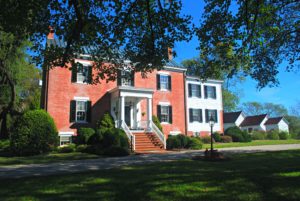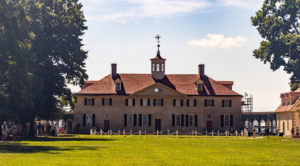When you think of historic homes, what images come to mind? Perhaps you envision imposing mansions perched proudly on acres of lush green land or quaint country inns operating for centuries. Whatever your definition of a historic home is, one thing is certain: Virginia has many of them.
Virginia is rich in history and its architecture reflects that. Beautiful historic homes can be found throughout the state, from the bustling city of Richmond to the small towns of the Shenandoah Valley. While each one is unique, they all have one thing in common: they are expensive.
This article will examine the average price of historic homes in Virginia. We’ll also examine why they’re so expensive and whether they’re worth the money.
The Average Price of a Historic Home in Virginia
Virginia is a state with a rich history, and that history is reflected in its architecture. Many homes in Virginia date back centuries, and these homes often come with a steep price tag.
The average price of a historic home in Virginia is $957,500. This may seem like a lot of money, but it’s actually quite reasonable when you consider the age of these homes and the amount of work that has gone into preserving them.
Moreover, many of these homes are in prime real estate locations, offering buyers a unique opportunity to own a piece of history.
Factors That Can Affect the Price of a Historic Home

Photo by Hugo Sousa on Unsplash
Several factors can affect the price of a historic home. Some of the most important are:
Location
The location of a historic home can have a big impact on its price. For example, homes in rural areas tend to be cheaper than those in urban areas because they are less accessible and have fewer amenities.
The most expensive historic homes in Virginia are located in Richmond and Alexandria. These homes are often situated in desirable neighborhoods with all the modern amenities. Conversely, the cheapest historic homes are typically found in the state’s small towns and rural areas.
Age
The age of a historic home is also a major factor affecting its price. Generally speaking, the older the home, the more expensive it will be. This is because older homes are rare and tend to have more features that make them unique.
In addition, older homes are often constructed with higher-quality materials and craftsmanship than newer homes. Also, historic homes typically have more character and charm than newer properties.
Size
The size of a historic home can also have an impact on its price. Larger homes are usually more expensive than smaller homes because they take up more space and often come with more features.
In Virginia, the average size of a historic home is about 2,700 square feet. However, plenty of larger homes are well over 4,000 square feet.
Condition
The condition of a historic home can also affect its price. For example, homes in good condition will usually be more expensive than those that need work. This is because it costs more money to purchase and maintain a home that is not in good condition.
Homes that need significant repairs or renovations can be a good deal, but they may not be worth the investment if the repairs are extensive.
Features
Regarding the features, we are talking about things like fireplaces, hardwood floors, and original moldings. The more features a historic home has, the more expensive it will be.
These features add to the home’s character and make it more desirable. Additionally, they can be costly to repair or replace if they are not in good condition. Therefore, this can also affect the price of a historic home.
The Benefits of Owning a Historic Home
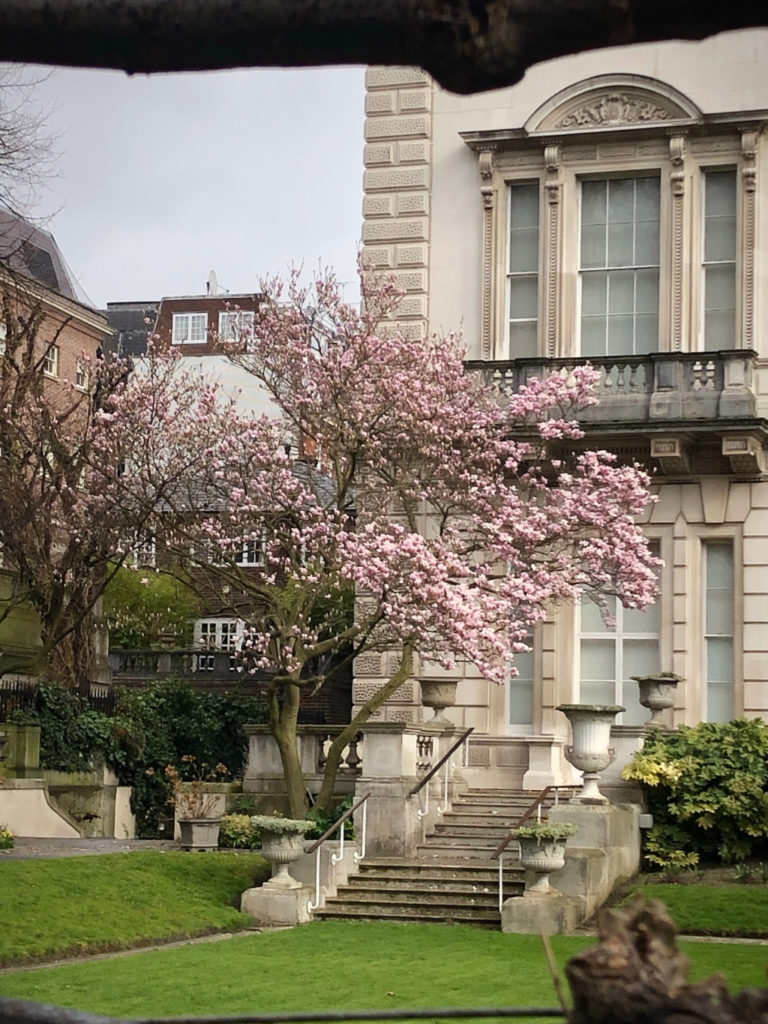
Photo by Arno Senoner on Unsplash
Many benefits come with owning a historic home. Some of the most important are:
Character and Charm
One of the best things about historic homes is their character and charm. This is something that you can’t find in newer homes. Historic homes often have unique features that make them one-of-a-kind.
This can include things like fireplaces, hardwood floors, and original moldings. These features add to the home’s overall appeal and make it more desirable.
Investment Potential
Another benefit of owning a historic home is that it has investment potential. This is because historic homes are rare and tend to appreciate in value over time.
This means that if you purchase a historic home, it will likely be worth more. This can be a great way to build equity and wealth over time.
Lower Maintenance Costs
Historic homes also tend to have lower maintenance costs than newer homes. This is because they are often constructed with higher-quality materials and craftsmanship. Additionally, older homes typically don’t have as many features that require regular maintenance.
For example, newer homes often have swimming pools and sprinkler systems that must be maintained regularly. However, historic homes typically don’t have these features. This can save you a lot of money in the long run.
Built to Last
Another benefit of owning a historic home is that they are built to last. This is because they are constructed with higher-quality materials and craftsmanship. In addition, historic homes typically have stronger foundations than newer homes.
This means they are less likely to experience foundation or water damage problems. This can save you a lot of money in repairs over time.
How to Find a Historic Home in Virginia
If you are interested in purchasing a historic home in Virginia, there are a few things you can do to find one.
- First, you can search online for listings of historic homes in the area. This can be a great way to see what is available and get an idea of prices.
- Another option is to contact a real estate agent like me that specializes in historic homes. Agents can help you find a historic home that meets your needs and budget, saving you the stress of searching for yourself.
- Finally, you can also check with the Virginia Department of Historic Resources. They maintain a database of all historic homes in the state. This is an excellent resource if you are looking for a specific type of historic home.
What Are Some of the Most Famous Virginia Historic Homes and What Makes Them So Special?
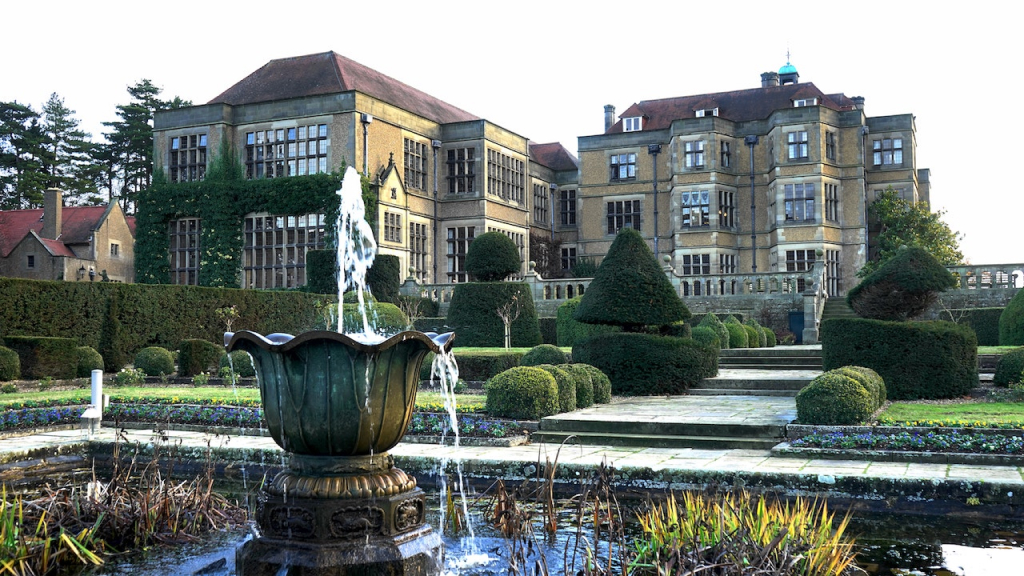
Photo by Mike B
Tuckahoe Plantation (Henrico County)
This home was built in 1714 and is one of the oldest surviving plantation homes in the country. It is also notable for its association with Thomas Jefferson, who lived here as a child.
This home is special because of its age and association with Thomas Jefferson.
Carlyle House (Alexandria)
Carlyle House is one of the most famous historic homes in Virginia. Built in 1753, it was the home of John Carlyle, a wealthy Scottish merchant, and his family. Today, the house is open to the public for tours and events.
Visitors can learn about the 18th-century way of life, see beautiful period furniture, and explore the gardens. The house is also surrounded by several other historic homes, making it a perfect place to take a stroll and learn about Alexandria’s rich history.
Many things make Carlyle House special, but its unique feature is its Georgian architecture. This type of architecture was prevalent in England during the 18th century, and John Carlyle brought it to Virginia when he built his house.
Mount Vernon (Fairfax County)
What makes Mount Vernon so unique is its connection to George Washington. He is one of the most famous presidents in American history, and Mount Vernon was his home for many years. In addition, Mount Vernon is a beautiful example of 18th-century architecture. It has been carefully preserved and is one of the best-preserved homes from this period.
Mount Vernon was the home of George Washington from 1754 until he died in 1799. Today, it is one of the most popular tourist destinations in Virginia. Visitors can tour the mansion, see the historic outbuildings, and explore the grounds.
Shirley Plantation (Charles City)
Shirley Plantation is the oldest active plantation in Virginia and one of the oldest family-owned businesses in North America, having been passed down through fourteen generations of the same family.
The house was built in 1723 and is an excellent example of Georgian architecture. It is also one of the most intact plantations, with nearly all of its original outbuildings. Shirley is known for its beautiful gardens, which landscape architect Jeffry Wythe Scott designed in the early 20th century.
The gardens feature a variety of flowers, shrubs, and trees, as well as a brick walkway that leads to a gazebo overlooking the James River. Visitors can tour the house and grounds, including the slave quarters, and learn about the history of the plantation and its role in American slavery.
Oatlands Plantation (Leesburg)
Photo by Maria Orlova
Built in 1804 by George Carter, Oatlands is one of the most extensive plantations in Virginia. It comprises over five thousand acres and has more than three hundred enslaved people. Today, Oatlands is a National Historic Landmark and is open to the public for tours and events.
What makes Oatlands so unique is its size and its history. The plantation played a significant role in American slavery. In addition, Oatlands is a beautiful example of Federal architecture. The house features many of this style’s classic elements, including symmetry, balance, and simplicity.
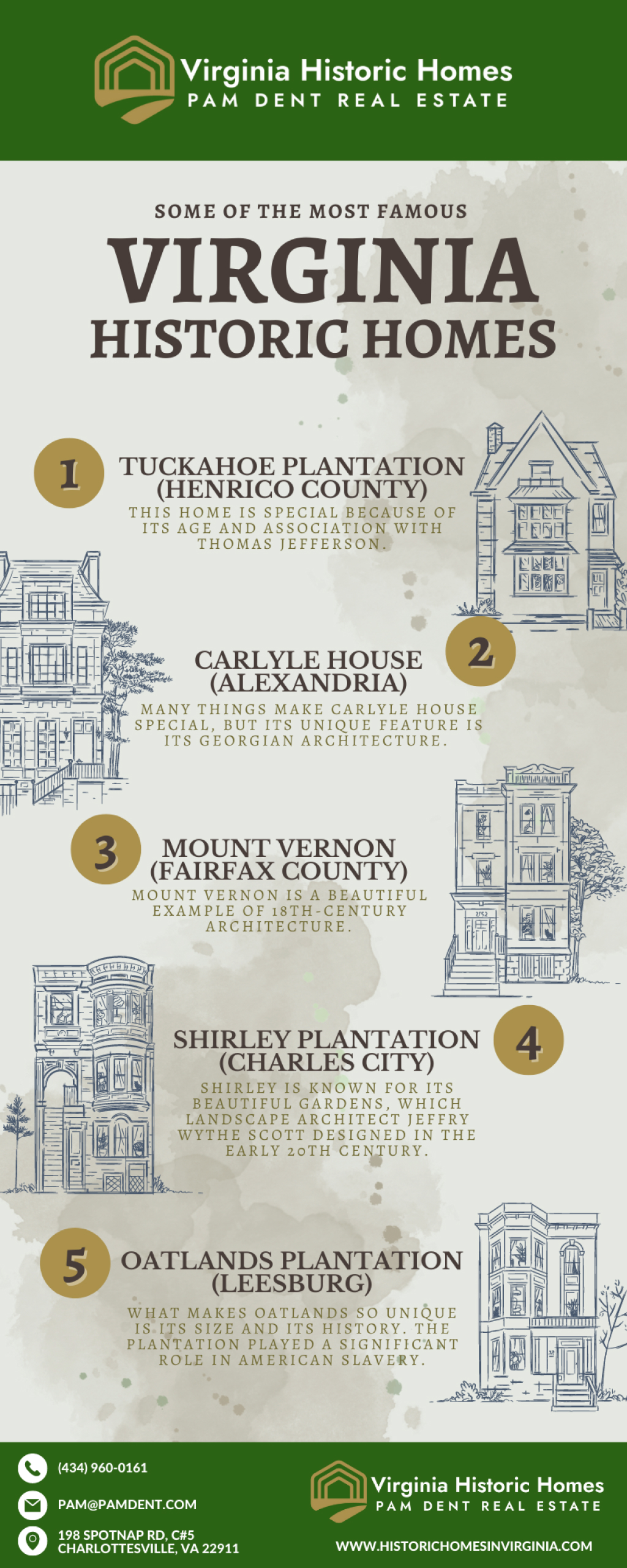
Final Thoughts
If you’re considering buying a historic home in Virginia, don’t hesitate to reach out to me. I will be more than happy to help you find the perfect property, saving you time, money, and hassle. After all, that’s what I do! I help my clients buy and sell historic homes in Virginia.
If you have any questions or want to learn more about Virginia historic homes, please contact me via Facebook, Twitter, Pinterest, YouTube, and Linkedln anytime. I would be glad to chat with you about this!
Frequently Asked Questions
What is the average price of a historic Virginia home?
The average price of a historic Virginia home is $957,500.
Are there any areas in Virginia where you can find cheap historic homes?
Yes, there are. There are affordable historic homes in areas like Bedford County, Amherst County, and Buckingham County.
Why do some homeowners restore their historic homes rather than sell them?
Some homeowners choose to restore their historic homes rather than sell them because they want to preserve the home’s history and keep it in the family. Additionally, some homeowners feel a sense of responsibility to maintain the historic integrity of their home and its surrounding area.
How will the average price of a historic Virginia home change in the next few years?
The average price of a historic Virginia home is not expected to change significantly in the next few years. However, as with any property, prices can fluctuate depending on market conditions.
What advice would you give homeowners interested in restoring their historic homes?
If you’re considering restoring your historic home, my best advice would be to consult a professional who is experienced with this type of work. Additionally, be sure to get bids from multiple contractors so that you can compare prices and services. Finally, make sure to factor in the cost of materials and permits when budgeting for your project.
What are some of the key features that can add value to a historic home?
Some of the key features that can add value to a historic home include the age, condition, location, and architectural style of the property.
How do you think the current economy has affected the market for historic homes in Virginia?
The current economy has had a mixed effect on the historic home market in Virginia. Many people reconsider buying a historic home, as the upkeep can be costly, and the home’s value may not appreciate as quickly as a newer home.
However, there are still many people who view historic homes as a good investment. The market for historic homes has generally remained strong despite the current economic conditions.
Are there any particular areas of Virginia that are more popular for historic home buyers?
Yes, these areas include the Northern Neck, Charlottesville, and Alexandria.
How do you think the current trend towards urban living will affect demand for historic homes in Virginia?
There’s no question that the current trend toward urban living is impacting the demand for historic homes in Virginia. More and more people are choosing to live in cities where they can be close to employment, entertainment, and other amenities.
As a result, there’s less interest in suburban and rural areas, including historic homes. However, it’s important to remember that trends come and go. Just as urban living is becoming popular now, the pendulum may swing back again at some point.
When that happens, there will likely be renewed interest in historic homes as people seek out places with character and charm. So, while the current trend may not be favorable for Virginia’s historic homes, it’s important to keep things in perspective. Trends change, and what’s popular today may not be popular tomorrow.
